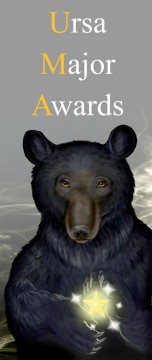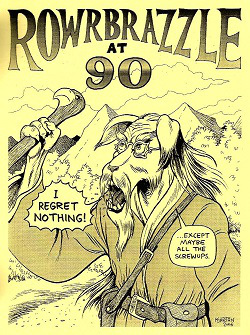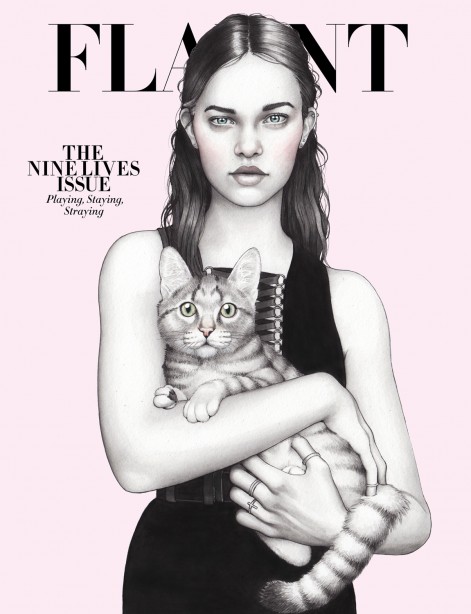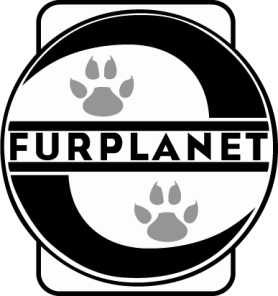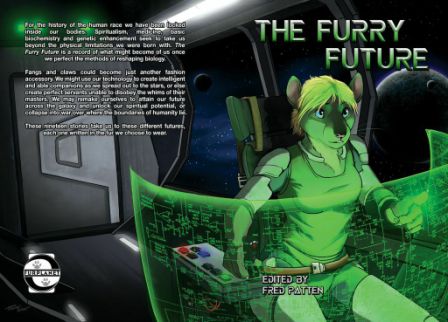 The Furry Future: 19 Possible Prognostications; Edited by Fred Patten, Fur Planet Productions, January 2015; trade paperback $19.95 (445 pages). Retails on Amazon for $17.56, but the Kindle edition is $8 even.
The Furry Future: 19 Possible Prognostications; Edited by Fred Patten, Fur Planet Productions, January 2015; trade paperback $19.95 (445 pages). Retails on Amazon for $17.56, but the Kindle edition is $8 even.
Review by Taral Wayne: What is a book? That question seems either too elementary or too profound to be answered by me. Nevertheless, the question cannot be evaded while trying to review this particular book.
Its editor, Fred Patten, sent it to me for a review. Fred has about as many oars in the water as the average trireme, and furry fandom is only one of those small ponds into which Fred puts his greatest effort. He has edited and published five or six books along the same lines as The Furry Future, as well as on other subjects.
Is The Furry Future a book? Well, it was published …
But what is a book? To my knowledge, Fred’s books are either very-small-press publications, or printed “on demand” through Amazon or Lulu, and as such, I suspect, only reach a microscopic niche audience. Modern desktop publishing has been hailed as a democratic revolution in literature … but it has also been condemned as a breakdown in a well-tested system that judged material on its merits before it was made available to the public. Now anyone can publish a book. Anyone can be an author. Having a book in print may now not mean a heck of a lot.
On the whole, though, I found the stories more professional than I expected. There were one or two dogs … and in one case I mean that literally. That particular story said much about the author that I had already suspected, and was not at all pleased to see confirmed in print. Other stories were mere wish-fulfillment fantasies. As well, human intolerance toward “furries” appeared repeatedly, rendering it a mere cliché. But three or four of the stories actually seemed to have reached a professional level.
There are 19 stories, written by 19 different authors. It is not very clear where the stories are from – I presume they are collected from a variety of sources of fan fiction, but perhaps some were written especially for this anthology. They have at least one thing in common: some or all of the characters in these stories are anthropomorphic. They run the gamut from talking cartoons to genetically spliced hybrids. Technically, The Furry Future is a theme anthology, no different from collections on the theme of exploring the planet Jupiter, or if the Confederacy had won the American Civil War. But where other theme anthologies explore different facets of science fiction or fantasy, The Furry Future is not aimed at the average science fiction or fantasy reader, but at a tiny niche audience called “furry fandom.”
I don’t think it has much purpose beyond preaching to the choir.
Each story dwells on one rationale or another for why the future must contain talking animal-people, without much benefit of logic. Why are animal hybrids always better than ordinary humans, for instance? Does not the superior olfactory sense of a dog also come with impaired colour vision, for instance? And why do dog people not sniff their environment – and each other – in a manner we mere Hominins would find distracting … if not downright revolting? Would it not make more sense to simply graft the gene for better hearing and smell into the human genome, without also cursing the offspring with tails, fur and muzzles? Or, if it is cheap labour that is the justification for engineering animal-people, why would it be necessary to breed so many different species of them, and not just one?
Most of these stories were, in fact, constructed around the anthropomorphic idea … anthropomorphism is a given, not to be questioned and does not develop naturally from the story. This is so much the case that one or two of the stories reduce to little more than big expository lumps, arguing the inevitability of “furries.”
“A Bedsheet for a Cape,” by Nathanael Gass, for instance, took a very unusual angle on the subject that I would spoil if I revealed too much about it.
“Trinka and the Robot,” by Ocean Tigrox also stood out, I thought, as did “Lunar Cavity,” by Mary E. Lowd. Curiously, both were very much like any SF story I might have found in Amazing or Fantastic in the late 1950s or early ‘60s. “Lunar Cavity,” in fact, was about an extraterrestrial race … and as such, I would argue falls outside the bounds of this anthology!
“The Darkness of Dead Stars,” by Dwale also would not have seemed out of place in a 1961 issue of Galaxy.
“Field Research,” by M.C.A. Hogarth, began well but seemed to lose its way, and came to a weaker ending than I thought it deserved.
“The Curators,” by T.S. McNally, also might have been a fine story but for a weak ending.
I did, in fact, make notes on each story as I read it. But nineteen is a lot of stories to recall in detail, even with notes, so I was sure from the start that I was not going to review every story individually. Instead, I would meditate on larger ideas.
One of those ideas is about the nature of published fiction.
Why is it that stories that would have been perfectly at home in a professional SF magazine in 1962 probably could not be sold to a prozine today? Make no mistake about it … although some of the stories in The Furry Future were written well enough for publication by the standards of 1962, I doubt very much they would find a home in any of 2015’s limited number of paying markets.
I wondered long about why this should be – was it a mere prejudice against “furry” stories? No doubt the signal from The Furry Future is geeky enough to deter almost any slush-pile reader. But, as I noted, some of the stories entirely lack the obsessive quality of most anthropomorphic fan fiction, so they must be noncommercial for some other reason. Far more likely, it is precisely because the stories would be so at home in a 1962 prozine.
To generalize, these are stories of asteroid miners, holstered blasters, sub-space and starships. Even when there is up-to-date computer science involved, they just feel old-fashioned. But the science fiction genre has moved on in the last 50 years, and not just stylistically. The genre has left those ideas behind and occupies a more nuanced space. For the printed word, a different vision of what the future might bring is in fashion. There’s no going back.
Unless, of course, you resort to Lulu or Amazon to print it for you. In this brave new world of democratic literature, anyone can be a publisher or writer. That is no guarantee that anyone else will ever read your words, however.
Should you take The Furry Future seriously enough to buy and read it? In good conscience, I can’t really say, “yes” … but not altogether “no,” either. If you are a furry fan, you will find much to enjoy in the collection … much that even deserves to be enjoyed. I hope that all such readers give serious thought to buying a copy. But if you are like most readers of modern science fiction and fantasy, you will quickly grow tired of stories about talking-animal people who have so little original to say about anything but their own anthropomorphism. These modern readers can find an almost infinite number of more suitable books to read, and shouldn’t waste their time on The Furry Future.
Perhaps they should re-read a Cordwainer Smith collection containing “The Ballad of Lost C’Mell” instead. For that matter, it would be a good idea if furry readers also did just that.

